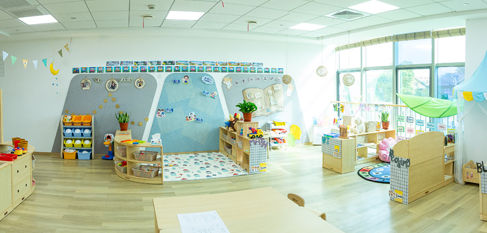Themes in ECE Curriculum
- Aimee Robson
- Jan 10, 2022
- 2 min read
In today’s blog post, I am going to be exploring two themes within the IB Primary Years Program (PYP). I am currently teaching in a PYP school, and I absolutely love the flexibility and student-led approach that it offers.

First, a bit about PYP
The PYP is a collaborative, inquiry-based and student-centered approach to learning, based upon constructivist and social-constructivist learning theories. It is orgnaized into six transdisciplinary themes, which consist of:
Who we are
Where we are in place and time
How we express ourselves
How the world works
How we organize ourselves, and
Sharing the planet
These themes relate to the world beyond the school, and are relevant and engaging, providing learners with authentic learning experiences that aren’t confined to the boundaries of traditional subjects. The framework is dynamic, allowing room for emergent and unexpected insights and connections from the students. Students explore real-world problems by going beyond subject boundaries, building concepts and skills across subject areas, as opposed to studying subjects in isolation (IBO, Charter Oak, & OWIS).
The two themes from the PYP I am going to explore in more detail today are the “Who We Are” and “How We Express Ourselves” themes. Each theme has a detailed description (see image below), and teachers choose a central idea to follow within that theme during the initial planning stages. The central idea provides a framework and structure to guide the overall learning, however students’ insights and ideas during the theme gives on-going direction.
Who We Are:
In this theme students are emersed into and exploration into the nature of their self. They are introduced to beliefs, values, physical health, mental health, relationships, families, cultures and communities. In essence it covers everything that makes us human, and what being human actually means (Twinkl). Essential lesson topics that are covered within this theme range from learning about body parts, differences in appearances, the five senses, families, preferences and cultures.
I find this unit to be particularly useful in starting off the year. Students are in a new environment, and it is a great topic to help them adjust to their classroom, build confidence and learn more about themselves and their new peers too.
Below are examples of corner activities for different subjects relating to the content being taught in this theme.
MATH | SCIENCE | ENGLISH | ART | BUILDING | ROLE PLAY |
Matching Activity: | Sensory Activity: | Word Activity: | Face Collage: | Build a Family House: | Dress Up: |
Count the number of people in a family picture and match it to the correct number | Explore sense of smell by guessing fragranced items in a concealed, but perforated cup | Match magnetic letters to an outline on a white board, to make up the words to the song “head, shoulders, knees + toes” | Make a collage out of various different cut outs of facial features | Pick a play card with 3 different sized families then build appropriate sized houses for each (small, medium, large) | Dress up as different roles within the family (e.g. mom, dad, grandma, grandpa) |
Click here to see a sample lesson plan on “My Family” within this theme.
How We Express Ourselves
In this theme students explore their creative sides and ways to express feelings, thoughts and emotions. It is a wonderful theme for young children, as it is bright, colourful and filled with many opportunities for creativity. Essential lesson topics that are covered within this theme include emotions and expressing oneself, colours and changes that occur when mixing colours, and meanings and emotions associated with colour, art and music.
Below are examples of corner activities for different subjects relating to the content being taught in this theme.
MATH | SCIENCE | ENGLISH | ART | BUILDING | MUSIC |
Pattern Making: | Colour Mixing Experiment: | Letter Formation: | Mini Playdough Earth Craft: | Build Colour Houses: | Colour Coded Music: |
Follow a pattern of different colours according to a play card drawn | Perform an experiment to learn about the colour changes that occur when mixing 2 colours | Build colourful letters out of lego blocks to practice letter formation and recognition | Squish blue + green play dough onto a paper plate to create mini earths (students can mix blue + yellow to make green) | Match colour blocks together to build houses of specific colours | Follow a colour code on the xylophone to create simple tunes like “twinkle twinkle” |
Click here to see a sample lesson plan on “Emotions and Colours” within this theme.
References:
PYP curriculum framework. (n.d.). International Baccalaureate®. https://www.ibo.org/programmes/primary-years-programme/curriculum/
PYP Transdisciplinary Themes. (n.d.). Twinkl. https://www.twinkl.com.cn/resources/pyp-transdisciplinary-themes-international-baccalaureate-international-schools/5-12-years-international-baccalaureate-ib/who-we-are-5-12-years-international-baccalaureate-ib
Sabharwal, E. (2021, November 13). What is Transdisciplinary Learning in the PYP? OWIS. https://www.owis.org/blog/what-is-transdisciplinary-learning-in-the-pyp
Transdisciplinary Themes & Program of Inquiry -. (n.d.). Charter Oak International Academy. https://charteroak.whps.org/ib-pyp/transdisciplinary-themes-program-of-inquiry







Comments